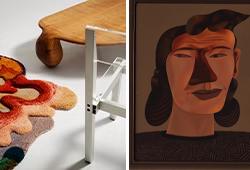A rare Meiping vase with dragon handles, Qing dynasty, with Yongzheng mark and of the period (1723-35).
Well potted and molded with dragon handles, two makara dragons pealing around the upper body in copper red hiding in the anhua relief with scrolling clouds. The base with a fine underglaze blue six character Yongzheng mark wihin double circle. Height 22 cm.
Kintsugi repair.
Alkuperä - Provenienssi
Gustaf Oscar Wallenberg (1865-1937), Stockholm, and thence by descent within the family.
Gustaf O. Wallenberg was a Swedish businessman, diplomat and active politician. He was the son of André Oscar Wallenberg, founder of Stockholm Enskilda Bank (today's Skandinaviska Enskilda Banken, known as SEB). After a career in the Swedish Navy he turned to the business world and was active in improving the transoceanic shipping industry.
Wallenberg was Sweden's Envoy to Tokyo between 1907-1918. In April 1907 he travelled to Beijing to amend the Treaty of Canton (1847) between Sweden-Norway and China and to establish diplomatic relations between Sweden and the Qing Court. As the Swedish Envoy Extraordinary and Minister Plenipotentiary at the Court of Peking, he successfully negotiated and signed with Lien Fang, the Guangxu Emperor's High Commissioner Plenipotentiary and Senior Vice-President of the Wai Wu Pu, the Treaty of Amity, Commerce and Navigation, between Sweden and China, which was signed in Beijing on 2 July 1908, with an additional article signed on 24 May 1909.
The collection was acquired between 1907 and 1918 when Wallenberg was the Swedish Envoy in Tokyo, and possibly during his diplomatic service in China. Documents preserved at the Östasiatiska Museum in Stockholm demonstrate the importance of Gustaf Wallenberg and his extensive connections with the Qing government to the Swedish engineers and businessmen who were in China during this period, such as Johan Gunnar Andersson, Osvald Siren, Orvar Karlbeck, Erik Nordstrom and many more.
Gustaf Wallenberg was the grandfather of Raoul Gustaf Wallenberg (1912-1945), an architect, businessman, and diplomat. Raoul Wallenberg has been designated by Yad Vashem as one of the Righteous Among Nations, as well as having many monuments and streets named after him in honour of him saving thousands of Jews in German-occupied Hungary during the Second World War, while serving as Sweden's Special Envoy in Budapest. As he lost his father the same year he was born, he was brought up also by his grandfather Gustaf Wallenberg, with the Chinese porcelain collection around him, inheriting part of the collection when his grandfather passed away in 1937. He died at a time unknown between 1945 and 1947, further to his detention in Budapest by General Malinovsky in 1944, and arrest by the Soviet authorities. Further to his disappearance his part of the Chinese collection was deposited at the Östasiatiska Museum in Stockholm, and later released to the family.
Kirjallisuus
The makara is a dragon-like mythical beast with a split and foliated tail and a floral scroll issuing from its mouth. Originating in Hindu mythology, the iconography of makara evolved in Tibetan Buddhism and became a popular motif depicted in Ming dynasty Imperial works of art. The depiction of the makara dragons and lotus blossoms illustrates the important relationship during the early to mid-Ming dynasty, between the Imperial court and Tibetan Buddhism, as continuation of the close relationship between the Yuan emperors and Tibetan hierarchs, and as means of exerting Imperial influence of the region as well as, occasionally, gaining religious legitimacy within the realm. This is an interesting and rare 18th century capture.
Muut tiedot
The Walleberg pieces are repaired in Japan in a technique called Kintsugi (translates to ‘golden joinery’), also known as kintsukuroi ‘golden repair’. It is a Japanese art of repairing broken pottery by mending areas of breakage with lacquer dusted or mixed with powdered gold, silver or platinum, and it treats breakage and repair as a part of the history of an object rather than something to disguise.
One can clearly see in the academic collection of Gustaf Wallenberg, that he appreciated the items for their quality and the rareness of the pieces, and that he very confident and appreciated this way of taking care of the magnificent cultural heritage of China.











































